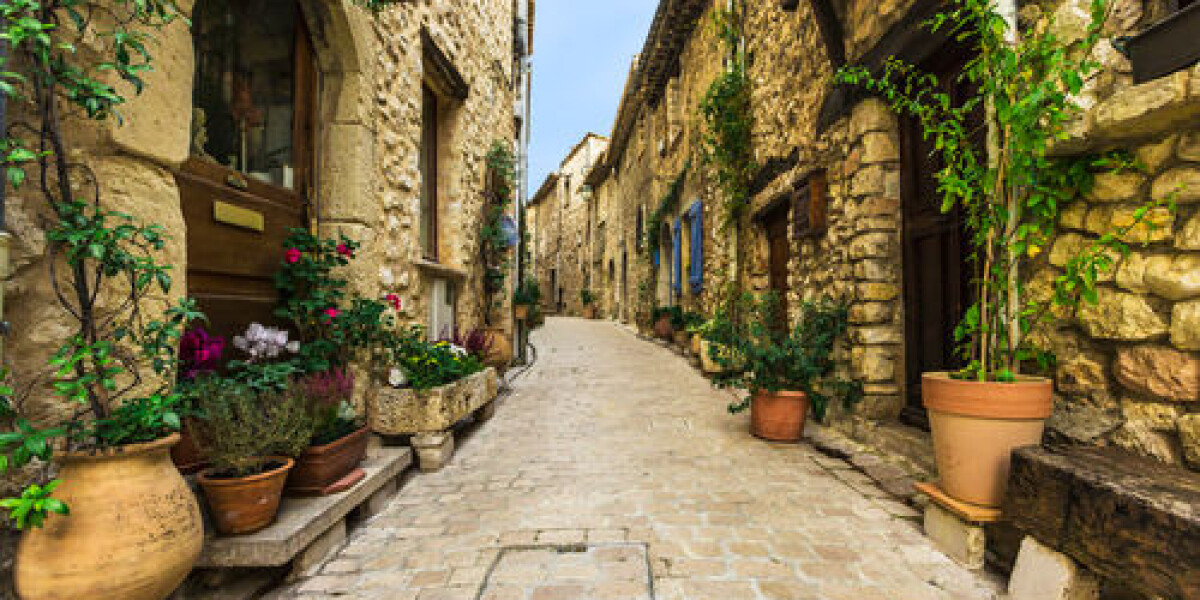
Map: see where house prices have risen the most in france
- Select a language for the TTS:
- UK English Female
- UK English Male
- US English Female
- US English Male
- Australian Female
- Australian Male
- Language selected: (auto detect) - EN
Play all audios:

PRICE INCREASES IN ALL DEPARTMENTS, REACHING 25% IN ONE THE LATEST NOTAIRE DATA SHOWS A rebalancing of the housing market in France is in full swing as effects on the market from Covid-19
continue to diminish, the latest notaires property update reveals. After an extraordinary two years, the volume of sales of non-new build properties in France was down by 6% in a year
(August 2021 to August 2022). Notaire data provides the most comprehensive overview of the property market in France as notaires are involved in all property sales. However the data takes
months to compile across the country, which is why the most recent report focuses on the third quarter of 2022. The data looks at the volume and value of sales of non-new build properties in
France. The number of sales for the 12 months November 2021 to November 2022 was 1,116,000 – down from the 12 months to August 2021 which saw an all-time peak of over 1.2 million sales.
However sales are still higher than any recorded pre-Covid level. Notaires had expected a stabilisation of activity after the year-on-year change between August 2020 and 2021 had seen a 23%
increase in sale volumes. HOUSE VALUES RISE ACROSS THE BOARD Prices of houses continued to rise despite the slowing of sales, although property values reached a more stable level of growth
in the third quarter of 2022, again attributed to the lessened effect of Covid-19 on the market. Median house prices across all regions rose. The data covers the third quarter of 2022 (July
to September) and compares average prices against those in previous three months (April to June 2022) and also against July to September 2021 (so over the previous 12 months). Prices in
Rouen, for example, saw a rise of only 0.6% over 12 months to September 2022, whereas Limoges, Metz, and Poitiers saw double digit percentage increases. Similar to the previous quarter’s
data, the three most expensive locations to buy non new-build houses were Corse-du-Sud (a median price of €500,000), Lyon (€471,000), with Toulon taking the third spot (€458,500). Paris is
not shown as top of the list as it is included within Ile-de-France figures and not measured independently. The average price in Ile-de-France was €375,300. The three cheapest areas were
Châteauroux (€135,000), Troyes (€192,000) and Poitiers (€195,000). The largest increases by percentage in Metropolitan France were Corse-du-Sud (25.8%), Amiens (12.8%), and Limoges (12.5%).
The overall rise in property value (see table below) is slightly lower than for the second quarter levels from three months before. Overall year-on year increases in property value were
6.4%, as opposed to 6.8% in the previous quarter. Once again, the notaires say this a sign of the market returning to normal after the increase in value and volume of sales caused by
Covid-19. FEWER PARISIANS LEAVING THE REGION One effect picked up on by the data was the reduction of people from Ile-de-France (known as ‘Franciliens’) buying property elsewhere,
particularly in the surrounding departments close to Ile-de-France. The initial rise in the volume of Franciliens buying property was caused by Covid-19, with many people in / near the
capital wanting to move out of the region during and after the health measures were put in place. Compared to 2021 figures when over 70% of departments saw an increase in Francilien buyers,
data for 2022 showed a stabilisation of buyers, and in fact a decrease in many of the departments surrounding Ile-de-France – including every department in Normandy. Whereas in 2021 the
department of Eure-et-Loir saw an 8% increase in buyers from Ile-de-France (with 35% of all properties sold in the department being bought by them), it saw a 3% drop in 2022. This may also
explain the relatively lower increase in house value in the Normandy cities of Caen and Rouen, as fewer Franciliens purchased in these regions.
